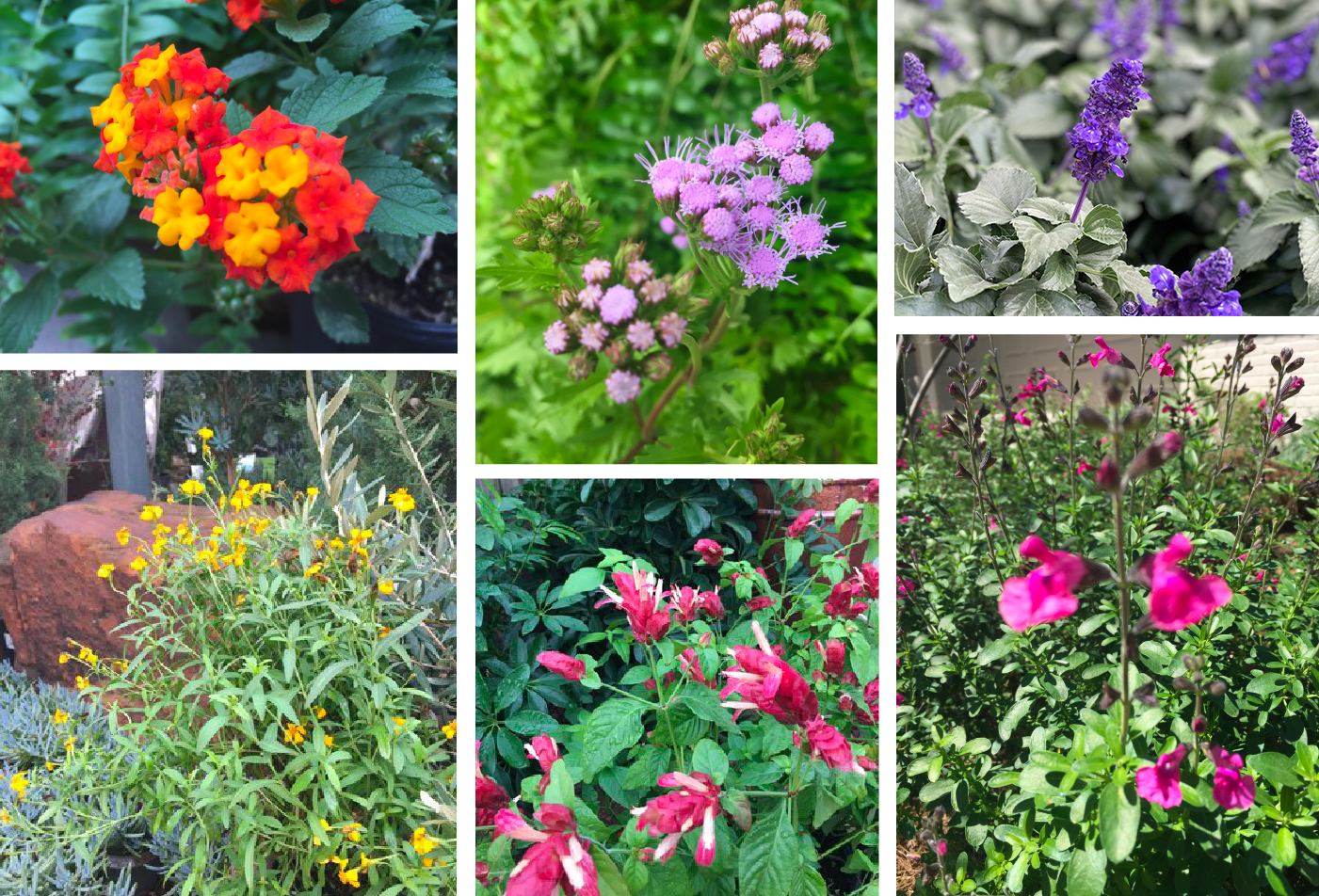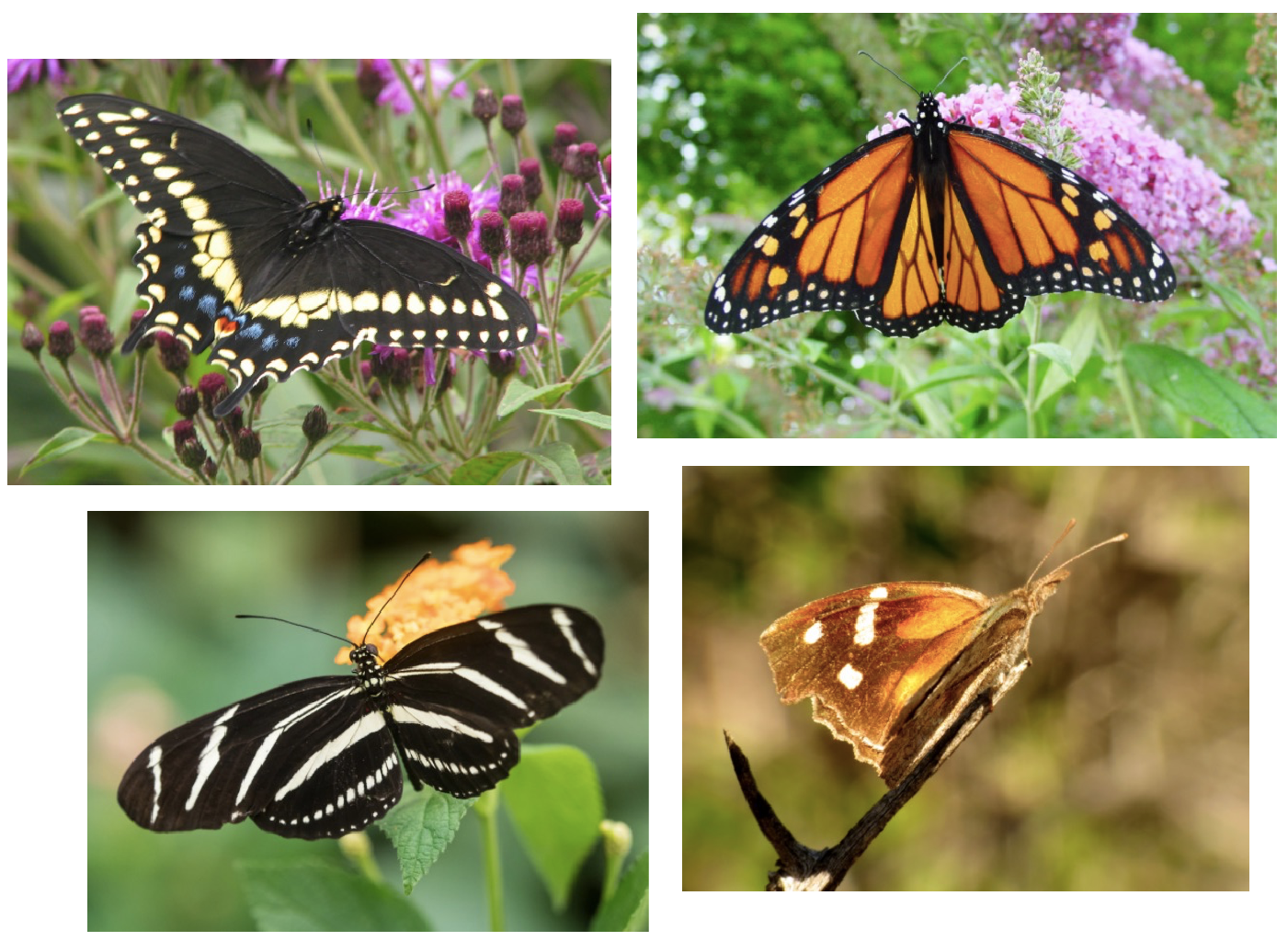One of my favorite pastimes, in between planting, fertilizing, trimming, and mulching, is sitting in my backyard and watching the butterflies dance around my garden. Here’s a few tips to entice these beauties to YOUR GARDEN!
Locate a sunny area.
Butterflies and most butterfly attracting plants require bright sunshine.
Plant nectar producing flowers.
Butterflies visit flowers in search of nectar to eat. Many butterflies seem to prefer purple, yellow, orange and red- orange blossoms. Clusters of short, tubular flowers or flat-topped blossoms provide the ideal shapes for butterflies to easily land and feed.
Select single flowers rather than double flowers.
The nectar of single flowers is more accessible and easier for butterflies to extract than the nectar of double flowers, which have more petals per flower.
Use large splashes of color in your landscape.
Butterflies are first attracted to flowers by their color. Groups of flowers are easier for butterflies to locate than isolated plants.
Plan for continuous bloom throughout the season.
Butterflies are active from early spring until late fall. Plant a selection of flowers that will provide nectar throughout the entire growing season. For blooms throughout the year, plant hamelia, shrimp plant. jatropha, lantana, bulbine, buddleia, mist flower, & penta. For flowers spring and fall, try mexican flame vine, verbena, mexican mint marigold, pavonia, passion vine, salvias, & fall chrysanthemums.

Plant for perching.
Plant some evergreen trees or shrubs for perching and rain shelter. Example: Yaupon holly or desert willow.
Include host plants in your garden design.
Host plants provide food for the caterpillar and lure female butterflies into the garden to lay eggs.
- Common Name: Larval Food Source
- Black Swallowtail: dill, parsley, fennel, carrot tops
- Fritillaries: passionflowers
- Giant Swallowtail: citrus, rue
- Julias: passionflowers
- Monarchs & Queens: milkweeds
- Pipevine Swallowtail: Dutchman’s pipevine
- Skippers: mallows
- Snouts: hackberry
- Sulphurs: cassias
- Viceroys: pear, cottonwood, willow
- Whites: mustards, pepper-grass
- Zebra Longwings: passionflowers

Include damp areas or shallow puddles in the garden.
Some butterflies drink and extract salts from moist soil. Occasionally large numbers of male butterflies congregate around a moist area to drink, forming a “puddle club”.
Place flat stones in the garden.
Butterflies often perch on stones, bare soil or vegetation, spread their wings and bask in the sun. Basking raises their body temperature so they are able to fly and remain active.
Do not use pesticides in or near a butterfly garden.
Most traditional garden pesticides are toxic to butterflies. Use predatory insects, insecticidal soap or hand remove the pests if problems occur.
Become a butterfly watcher!
Get to know the colorful butterflies that visit your garden. They are easy to identify with a field guide or butterfly app!

-Sally



Bill Huff says
Where can I find milkweed plants to purchase?
Jesse says
We carry tropical milkweed here at Gill’s. In stock now.
Vickie says
Do you sale 3 in 1 butterfly Bush and if so at what cost?
Thank you
Jesse says
Hi Vickie – we do not have the 3 in 1 variety at the moment, but we do have Buddleia ‘Black Night’ in a 1gal for $12.99